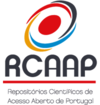A Escrita no Autismo Como Uma Possibilidade de Enunciação.
DOI:
https://doi.org/10.5281/zenodo.11358920Abstract
In the educational environment, students with autism often present difficulties in participating in group activities, isolation, immature language and fixation on specific themes. It is important to highlight that students with autism have difficulty, or do not understand, metaphors and other forms of non-literal language. Our objective is to analyze the enunciative movements present in a narrative written by an autistic student, confirming the subject's slip in language. To reflect on the subject's relationship with written language, we use as a theoretical reference the concepts of enunciative linguistics by researcher Émile Benveniste (1902-1976), who defines enunciation as the individual act of putting language into operation and configures specific marks of the subject in language. A student diagnosed with autism, 14 years old, without comorbidity, enrolled in the eighth year of Elementary School II at a private school, participated in this study, who is monitored in the Specialized Educational Service room, in the city of Cabo de Santo Agostinho, Pernambuco . The analysis of the written narrative showed that the student presents enunciative movements indicative of the unique handling of written language, marking his subjectivity in the language.
Downloads
References
AMERICAN PSYCHIATRIC ASSOCIATION - APA.Manual diagnóstico e estatístico de transtornos mentais: DSM-5.Porto Alegre: Artmed, 2014.
ASSUMPÇÃO JR., Francisco Baptista. (Org.). Transtornos Invasivos Do Desenvolvimento Infantil. São Paulo: Lemos Editorial, 1997.
BENVENISTE, É. Problemas de linguística geral I. 5ª ed. Trad. Maria da Glória Novak e Maria Luisa Neri. Campinas, SP: Pontes, 2005.
BENVENISTE, É. Problemas de linguística geral II. 2ª ed. Trad. Eduardo Guimarães et al. Campinas,SP: Pontes, 2006.
BERNARDINO, Leda Mariza Fischer. A importância da escrita na clínica do autismo. Revista USP. 2015.
BIALER. M. A voz no autismo: uma análise baseada em autobiografias. Estilos clin., São Paulo, v. 22, n. 2, maio/ago. 2015
BERNARDINO, L. M. F. O que a psicanálise pode ensinar sobre a criança, sujeito em constituição. São Paulo: Escuta, 20CAVALCANTI, Ana Elizabeth; ROCHA, Paulina Schmidtbauer. Autismo: construção e desconstruções, São Paulo: Casa do psicólogo, 2001.
BASTOS, M. B. Incidências do educar no tratar: desafios para a clínica psicanalítica da psicose infantil e do autismo. 2012. Tese - Universidade de São Paulo, São Paulo, 2012.
ENDRUWEIT, Magali Lopes. Análises da Enunciação Escrita.Anais do Seminário Internacional de Texto, Enunciação e Discurso(SITED). Porto Alegre, 2010.
FERRARI, Pierre. Autismo infantil: o que é e como tratar. Trad. Marcelo Dias Almada. São Paulo:Paulinas, 2007.
FERNANDES, Fernanda Dreux Miranda; PASTORELLO, Lucila Maria; SCHEUER, Claudia Inês. Fonoaudiologia em distúrbios psiquiátricos da infância. São Paulo: Lovise, 1995.
FERNANDES, Fernanda Dreux Miranda. Autismo infantil: repensando o enfoque fonoaudiológico – aspectos funcionais da comunicação. São Paulo: Lovise, 1996.
JERUSALINSKY, A. N. A psicanálise do Autismo 2 ed.- São Paulo: Instituto Langage, 2012.
KNACK, Carolina. Texto e enunciação: as modalidades escritas como instâncias de investigação. 2012. 189f. Dissertação (Mestrado em Estudos da Linguagem). Universidade Federal do Rio Grande do Sul, Porto Alegre, 2012.
KANNER, Leo. Psiquiatría infantil. Buenos Aires: Paidos e Psique,1966
LE SOURN-BISSAOUI, SL et al (2011).Ambiguitydetection in adolescentswith Asperger syndrome: Is central coherenceortheoryof mind impaired? Research in Autism Spectrum Disorders. 5(1): 648–656
MALEVAL, J.C. O autista e sua voz. São Paulo: Blucher, 2017.
MINAYO, M. C. S. Ciência, Técnica e Arte: O desafio da pesquisa social. In: DESLANDES, S.F. Pesquisa Social: teoria, método e criatividade. 21. Ed Petrópolis, RJ: Vozes, 2001
MILMANN, E. O papel fundamental da escrita na educação inclusiva. IN: KUPFER, M. C. M; PATTO, M. H. S; VOLTOLINI, R. (Org.) Práticas Inclusivas em escolas transformadoras: acolhendo o aluno sujeito. São Paulo: Escuta: FAPESP, 2017, P. 91-108.
MATOS, CM. Compreensão de linguagem não-literal em crianças com Perturbações do Espectro do Autismo. Orientador: Professora Doutora Maria Armanda Costa. 2012. 156 f. Dissertação de Mestrado (Mestre em Ciência Cognitiva) - Universidade de Lisboa, Lisboa, 2012.
NEY, T.; HUBNER, L. C. Linguagem oral e escrita no autismo - TEA: perspectivas teóricas e pedagógicas. The Especialist 2022.
RODRIGUES, E. A., AGUSTINI, C., & ARAÚJO, Érica D. de. (2022). A teorização de Émile Benveniste sobre escrita: (d)o ponto de vista da vida social. Fragmentum, 2020
SILVA, Carmem Luci da Costa. A criança na linguagem: enunciação e aquisição. Campinas, SP: Pontes Editores, 2009.
SILVA, Ana Beatriz B, (et al). Mundo singular: entenda o autismo. Rio de Janeiro:Objetiva, 2012.
TOLDO, C. O texto: unidade de sentido no trabalho com a língua na escola. Cadernos de Linguística,2021
WALENSKI, M.; TAGER-FLUSBERG, H.; ULLMAN, M. T. Linguagem no autismo. In MOLDIN, S. O.; RUBENSTEIN, J. L. R. (orgs.). Entendendo o autismo: da neurociência básica ao tratamento, p. 175-203. Londres: Taylor & Francis Books, 2006.
Downloads
Published
How to Cite
Section
License
Copyright (c) 2024 Revista Letras Raras

This work is licensed under a Creative Commons Attribution-NonCommercial 4.0 International License.







